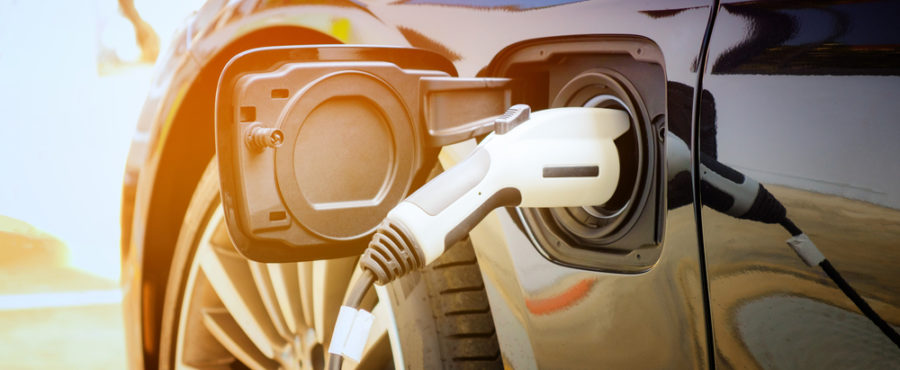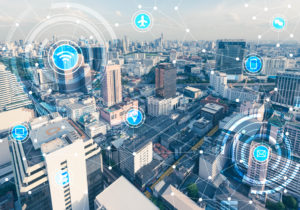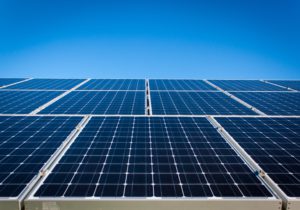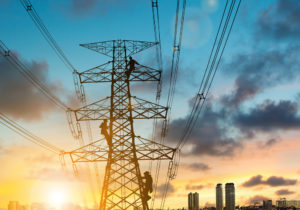
Analysis of the European Copper Institute (www.leonardo-energy.pl)
Copper is one of the key materials for the development of electromobility. Cars with electric drive contain up to four times more of this raw material than cars with an internal combustion engine. Copper is also intensively used in the infrastructure necessary to recharge electric vehicles. Due to the development of the electromobility sector by 2027, the global demand for copper will increase by 1.7 million tons – experts of the European Copper Institute assess.
A new energy boost for the automotive industry
The electric car market is growing more and more dynamically. In the first half of 2018, 183 285 electric and hybrid vehicles were registered in the European Union and EFTA countries, which means an increase of 42.3% compared to the same period last year[1]. Even greater dynamics can be observed in Poland. During the first six months of 2018, 672 electric cars appeared on our roads, which is 79.7% more than at the end of the second quarter of 2017. However, in the coming years a significant acceleration of the current trend is expected. According to the assumptions of the Strategy for Responsible Development, in 2025 there should be already registered 1 million EV cars in Poland. In turn, by 2040, the share of electric cars, including plug-in hybrids, in the global automotive market can reach over 50% (currently it is about 1.3%)[2].
Among the reasons for the growing popularity of electric cars, it is necessary to indicate the development of battery production technology and, consequently, the fall in EV prices. In spite of the still relatively high prices of electric vehicles, their availability measured in the long-term use improves. According to the forecast of the European Copper Institute, soon the total cost of owning an electric car will equal after the first 60,000 km with the cost of owning a car with a gasoline engine. This should happen before 2020. Experts expect that the purchase price equation without subsidies will take place around 2025.
In the case of city buses or lorries, the electrification technology is as mature as for passenger cars, and the total cost of owning EV vehicles of this type is already lower than for the internal combustion engine option. Due to the high annual mileage, electric trucks offer greater savings, thus offsetting the higher capital expenditure.
The growing environmental requirements related to greenhouse gas emissions also play a major role in the development of the electric car market. Electrification of road transport is in fact the most cost-effective way to achieve energy efficiency goals. Electric vehicles with battery power belong to assets with an average service life of 15 years and 2.5 times higher energy efficiency than vehicles with an internal combustion engine (ICE), and as the share of energy from renewable sources in the generation of electricity increases, this efficiency will be further correct.
The development of electromobility is also largely dependent on copper. This metal is commonly used to build modern, energy-saving electric and hybrid motors. It results from its properties. Copper is durable, has excellent results in electrical conductivity, affects the efficiency of electrical components. Without the copper components, intelligent engine management and transmission would not be possible. Poland as one of the world leaders in the field of copper production can play a special role in the development of the global electromobility market.
Electromobility brakes
One of the key barriers to the spread of electric vehicles is the development of infrastructure enabling their charging. The European Commission, based on information received from the Member States, estimates that there are approximately 200,000 public charging stations in the EU. Bearing in mind the development of electromobility, EU authorities expect support for the extension of this network to 800,000 points.
Creating the right infrastructure is also a huge challenge facing Poland. Currently, only around 300 public charging points are available in the country. The analyzes carried out by the Foundation for Electric Vehicles[3] Promotion show that in order to fully use the potential of the domestic market, it is necessary to build around 127,000 charging points (public and private) and slightly below 1 million by 2025.
The development of electromobility will entail the necessity of incurring additional expenditures for the modernization of the entire power grid, which will have to cope with both greater demand for electricity and intense voltage frequency fluctuations, and above all ensure the possibility of energy storage. Thus, electromobility can become a factor initiating a comprehensive transformation of Poland towards an economy based on renewable energy sources.
Copper drives electromobility
Copper will also be necessary in this process. This raw material, due to its properties, is commonly found in such areas as photovoltaic or wind energy, improving their overall economic efficiency. Copper is used, among others for the production of wires and cables, photovoltaic panels and elements of solar windmills (generators, earthing systems, cable connections). The technologies based on copper and its alloys increase energy efficiency in key areas – energy and industry. Due to the intensive development of the electromobility sector by 2027, the global demand for copper will increase by 1.7 million tons.
Estimates from the European Copper Institute show that every kilogram of raw material used in the energy system, depending on the technology used, saves originally produced energy from 500 to 50,000 kWh, reducing costs from 60 to 6000 EUR at EU level. In addition, in the next 10-20 years, Europe will be able to reduce its CO2 emissions by 100 million tonnes per year using the excellent electrical conductivity of copper.
Necessary system support
However, access to infrastructure and strategic raw materials is still not sufficient for the electromobility market to develop its full potential. Acceleration of growth dynamics will also require strong system support, going beyond standard subsidy programs or tax breaks.
One of the areas indicated by experts is the introduction by electricity suppliers of dedicated tariffs, preferring users charging EV vehicles outside the hours of the highest network load, eg at night. Such solutions are already applied in the consumer market and allow to generate significant financial savings[4].
In the United States and Western Europe, initiatives aimed at redirecting surplus energy from solar farms and wind farms to vehicle charging stations are becoming more and more popular at night, thus encouraging drivers to „refuel” electricity outside off-peak hours.
These solutions, despite the large economic potential, should, however, be supported by educational activities addressed to electric car drivers. The prevailing part of users uses standard tariff plans, including mainly due to the lack of adequate knowledge in the scope of effective management of energy consumption in their households and companies.
In the opinion of experts, it is also necessary to develop smart grids (smart-grid-enabled). This technology enables optimization of energy efficiency, based on data exchange between system participants – individual or fleet drivers, energy suppliers, charging point operators, electric car manufacturers as well as local government institutions. Dissemination of such solutions requires, however, developing uniform market standards at each of the points of contact between the involved entities.
Michael Ramczykowski, President of the European Copper Institute[5]
[1] National Automobile Manufacturers’ Associations – 09.2018
[2] Deloitte „Powering the future of mobility”
[3] http://fppe.pl/wp-content/uploads/2018/03/Napędzamy-Polską-Przyszłość.pdf
[4] Deloitte „Powering the future of mobility”
[5] The European Copper Institute (EIM) www.instytutmiedzi.pl operates within the framework of the global Copper Alliance, which aims to create market conditions for increasing the use of products from copper and its alloys in many fields of economy such as energy, telecommunications, construction, architecture, environmental protection and medicine. The Institute’s activity is based on the belief that copper has unique properties and technical parameters, the use of which allows creating solutions that improve the quality of life and the development of renewable energy, improve energy efficiency and climate protection.




